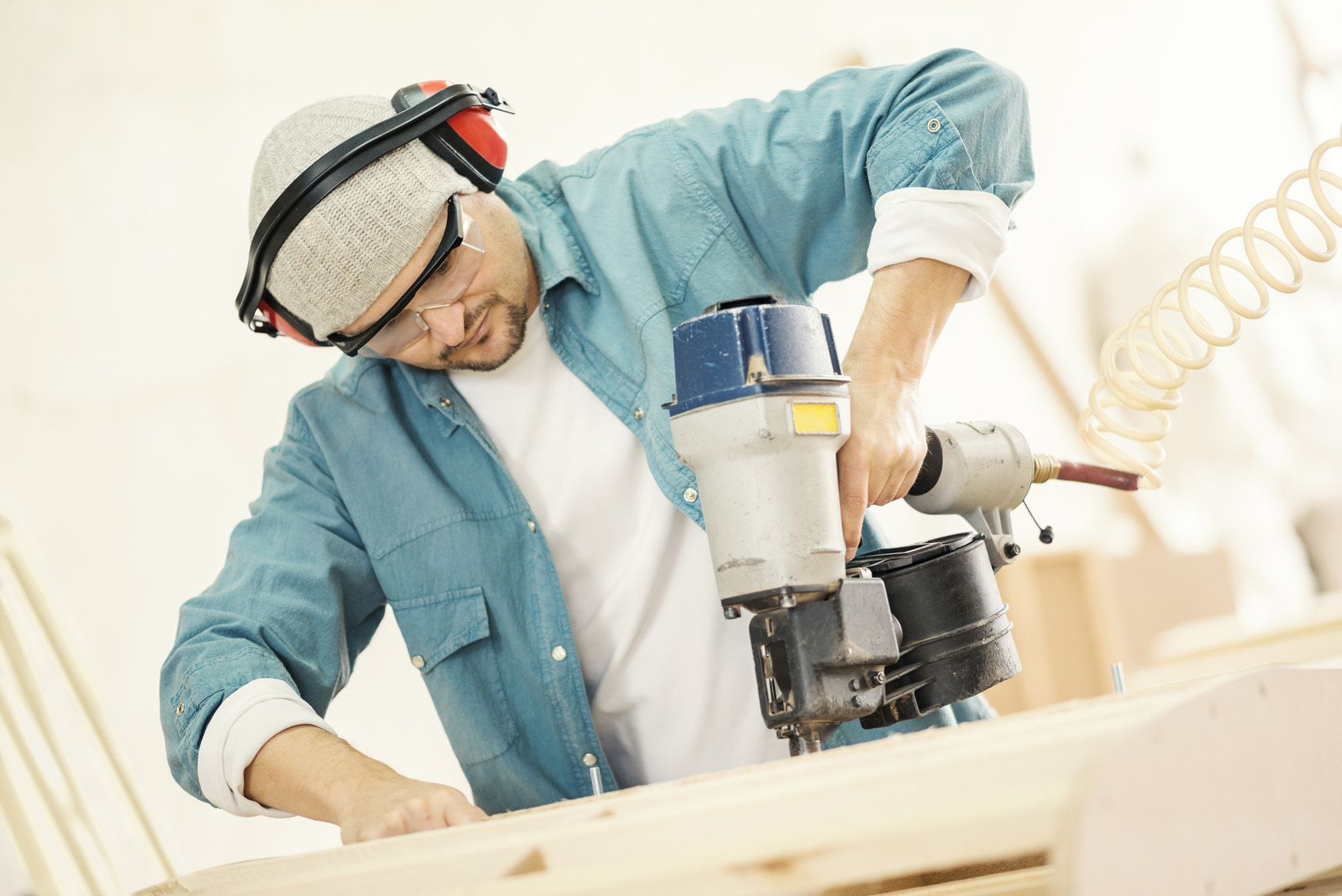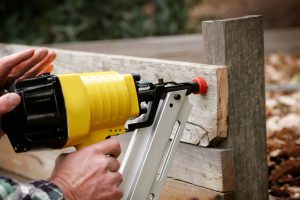
Every year about 40,000 nail-gun injuries occur in the US and nail guns account for 14% of the injuries  reported to OSHA. It’s not only the nail gun operators that are in the firing line; 12% of injuries happen to bystanders. New users are most likely to incur injuries, but the high numbers of nail gun injuries can also be attributed to the removal of safety features such as sequential triggers, which contractors argue impede progress and take up valuable time.
reported to OSHA. It’s not only the nail gun operators that are in the firing line; 12% of injuries happen to bystanders. New users are most likely to incur injuries, but the high numbers of nail gun injuries can also be attributed to the removal of safety features such as sequential triggers, which contractors argue impede progress and take up valuable time.
According to a CDC report, apprentice carpenters are the most likely to suffer injury with two out of five reporting a nail gun incident in their first four years on the job. Even seasoned pros still experience issues that can result in serious injury. OSHA has identified seven risk factors that contribute to the likelihood of nail gun injuries. Knowing what causes injuries will help you to manage your jobsite in such a way as to avoid injury and ensure the safety of your crew.
Removing Safety Mechanisms
Many carpenters and contractors will remove the safety features or safety contact tips in order to work faster, but an injury on the jobsite will hold up your workflow for far longer. Regularly check safety features to ensure that they are in good working order.
Ricochet
When the nail doesn’t hit home and bounces back, it becomes a dangerous projectile. This can happen when working with hardwoods and laminates or around metal framing hardware.
Double Fire
Specific to nail guns with a contact trigger, a second nail can fire faster than you are able to react and release the trigger. This happens when you are working in a tight spot, pushing hard to counteract recoil or trying to place the contact safety tip against a board accurately.
Missing your Mark
When the nail gun isn’t making proper contact with its intended target, the nail could become a projectile. This commonly happens when you are working near edges or when you are nailing through a sheathing product and miss the stud.
Knocking the Nosepiece with the Trigger Pulled
Don’t carry your gun around with your finger on the trigger. If you accidentally knock the contact safety piece up against a ladder or bump into a co-worker and pull the trigger, the results may be disastrous.
Working in a Tight Space
Working in a tight space makes the tool and the recoil more difficult to control. Be especially careful when toe-nailing, using your non-dominant hand, nailing overhead and nailing towards yourself.
Safety Tips
- Work carefully rather than quickly.
- Always prepare your jobsite so it’s clean, clear and safe.
- Don’t bump the nail gun trigger until you are ready to fire.
- Check on the other side of walls and roofs to ensure that it’s clear before nailing wall panels in place.
- Always wear the appropriate protective gear.
- Disconnect the air supply when you are loading the gun or clearing a jammed fastener.
